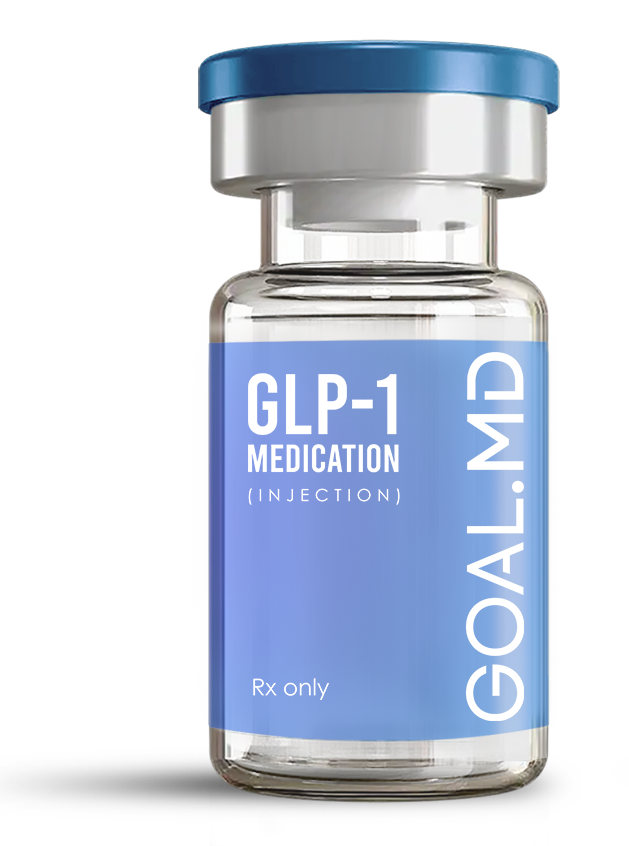
GOAL.MD Health & Wellness Blog
Evidence-based insights, medical weight loss information, and practical tips from our physicians and healthcare experts.

Is It Normal to Lose Weight This Fast? What to Expect on GLP-1 Meds
GLP-1 medications like Semaglutide and Tirzepatide are often praised for their rapid and dramatic results—but that can leave many new users wondering: “Am I losing weight too quickly?” or “Why am I not seeing results yet?”
Let’s break down what a normal timeline looks like, how quickly GLP-1s are expected to work, and how to tell if you’re on the right track with healthy, sustainable progress.
Week-by-Week: The GLP-1 Weight Loss Timeline
The weight loss journey with GLP-1 receptor agonists isn’t a one-size-fits-all experience. However, there are some general patterns most patients can expect:
Weeks 1–4: Adjustment Phase
Most people start on a very low dose to help the body adapt.
Appetite may decrease gradually.
It’s common to lose 1–5 pounds during this phase—or nothing at all.
Nausea or fatigue may temporarily slow down motivation or activity levels.
Weeks 5–12: Fat Loss Momentum
Appetite suppression becomes more noticeable.
Fatigue and GI side effects usually decrease.
Expect to lose 1–2 pounds per week on average, although some may see more.
Cravings are often significantly reduced.
Month 3 and Beyond: Steady Progress
For many patients, weight loss accelerates between months 3–6 as higher therapeutic doses kick in.
Average total weight loss: 10–15% of starting body weight over several months.
Results vary based on factors like adherence, lifestyle habits, and individual metabolism.
Is Rapid Weight Loss Safe?
Losing more than 2 pounds per week over a sustained period may seem exciting, but it’s not always ideal. Extremely fast weight loss can lead to:
Muscle mass loss instead of fat
Nutrient deficiencies
Electrolyte imbalances
More pronounced fatigue or mood changes
If you’re losing weight faster than expected, it’s worth speaking with your provider about adjusting your dose or reviewing your nutrition.
Managing Expectations: Don’t Compare Your Journey
It’s tempting to compare your progress with others online, especially in support groups or forums. But remember:
Some people lose 15+ pounds in the first month—others don’t see results until months 2 or 3.
Metabolic conditions, sleep, stress, and hormone levels all affect results.
The goal is long-term, healthy body recomposition—not crash dieting.
Tips to Keep Your Progress Healthy
Track non-scale victories: Like better energy, fewer cravings, and looser clothes.
Don’t rush the dose: Slower escalation often means fewer side effects and better long-term results.
Stay hydrated and eat protein: Support metabolism and muscle retention.
Move daily: Even short walks help fat burn and improve GLP-1 response.
What “Normal Progress” Looks Like
If you’re losing 0.5 to 2 pounds per week consistently, that’s very normal and very healthy. Progress may slow down at times, especially as your body adapts—but the overall trend matters most.
Even when weight loss pauses, you’re still healing metabolically, balancing hormones, and resetting your appetite cues.
Want Expert Support on Your Journey?
At GOAL.MD, we specialize in GLP-1-based treatments that don’t just help you lose weight—but help you understand why your body changes and how to make the most of it.
👉 Get started now and let our care team guide your journey with personalized dosing, nutrition coaching, and full support.
This article is for informational purposes only and not intended as medical advice. Mentions of brand names like Ozempic®, Wegovy®, or companies such as Novo Nordisk or Eli Lilly are for context only and do not imply affiliation or endorsement.
Why GOAL.MD?
✅ Sourced from audited 503a US compounding pharmacies.
✅ Custom dosages adjusted to your needs.
✅ Free consultation + 24/7 support.

How It Works
1. Quiz
90 seconds. No commitment.
2. Consult
Video chat with your GOAL.MD doctor.
3. Deliver
Meds at your door tomorrow.
Transform Your Life with Physician-Directed Care
Join thousands who've found success with physician-directed care. Take our 3-minute quiz to see if medical weight loss is right for you.








